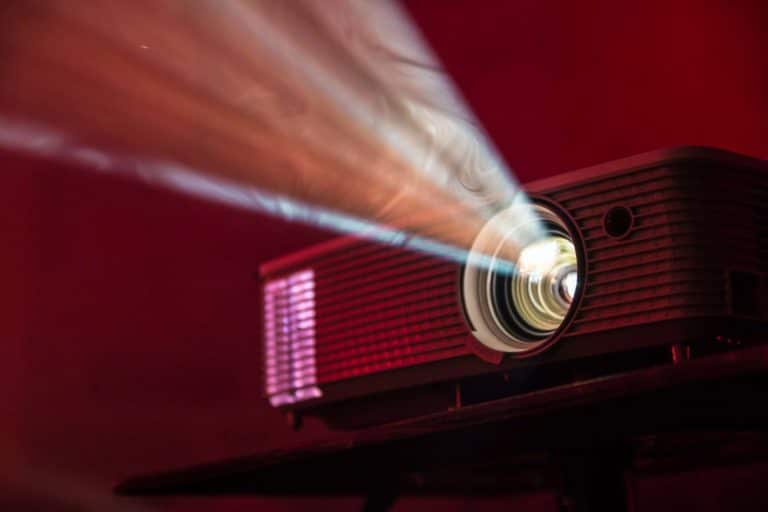
The technological advancements in augmented reality (AR) and virtual reality (VR) are significant. Companies in the XR communities are excited about what the future holds for these revolutionary technologies.
Generally speaking, the world of simulated reality is developing rapidly, and it can be challenging to keep up with all of it. VR, AR and mixed reality (MR) are three technologies used across the world and industries for many reasons.
Moreover, emerging methods for using this technology are making waves in various fields, such as healthcare and entertainment. Projection mapping is one AR-adjacent technology being leveraged by some of these industries. Let’s explore projection mapping: what it is and some of its most common use cases.
What Is Projection Mapping?
The concept of projection mapping is not new, but the term is being used more frequently. The earliest examples of projection mapping date back to the 1960s. Other terms can replace projection mapping, including video mapping, spatial AR or 3D-mapping.
Projection mapping is a projection technique where 3D objects are used as a display surface. In other words, imagine that videos are projected onto cars or buildings instead of a flat, white screen.
One of the most notable examples of projection mapping is in Disneyland’s Haunted Mansion ride. Multiple projection mapping effects are used in the ride, including singing busts, a disembodied head, and Madame Leota.
Projection mapping is essentially projected AR but has some components that make it most similar to MR. It can create optical illusions that alter the audience’s perception of what they’re viewing, and what they see is just a combination of the right lighting, angles, and projections.
5 Use Cases of Projection Mapping
There are many different use cases for projection mapping — from retail to healthcare. Let’s explore some of the common applications for projection mapping across sectors.
1. Theater
It’s very common to see different theater productions leverage projection mapping technology to create mind-blowing effects for the audience’s pleasure. One of the most prominent examples of projection mapping in theater is in the Broadway show “The Curious Incident of the Dog in the Night-Time.”
Because the visual effects that come with projection mapping are so immersive and intense, theater productions are relying on this technology to create more engaging shows.
2. Healthcare
Understanding the human body can be made simpler using projection mapping. When a digital version of the human body is projected onto a 3D surface, medical students can learn about the different muscles, bone structures and internal organs. Projection mapping can also be used in the operating room.
Mapping technology can help doctors keep a steady hand, reduce complications, and make it easier for nurses to assist during surgeries. When doctors and nurses are on their feet during long surgeries, it can lead to feelings of exhaustion and disengagement, which can negatively affect the outcome of the surgery.
With projection mapping, these scenarios can be avoided, so all members participating in the surgery are alert and ready to use technology to simplify the process.
3. EDM Festivals and Concerts
Electronic dance music (EDM) is growing in popularity, and many live concerts or festivals will use projection mapping technology to capture the audience’s attention. The best part? Some of the projections will move to the beat of the music, making it an enjoyable experience for anyone watching.
There’s even an entire music event dedicated to projection mapping, named Borealis, that takes place annually in Seattle.
4. Advertising and Marketing
Many companies have decided to leverage projection mapping to create engaging advertisements and marketing campaigns. Organizations in major cities will use tall skyscrapers to their advantage by projecting their ads onto them for the entire surrounding area to see.
For example, in Chicago, Target hired Chicago Projection Mapping to create an entire Halloween/Dia de Los Muertos installation that played at the Nokia Plaza.
5. Retail
Retailers worldwide need to find innovative ways to capture their audience’s attention to increase the chances that they’ll purchase their product offerings. Projection mapping is used in the retail sector to create astonishing displays, and it’s likely going to revolutionize the industry altogether.
Retailers use projection mapping to enhance their existing displays and seamlessly blend digital content with real-world objects to create the ultimate customer experience. Customer experience is expected to be the main priority for many companies.
While these are only a handful of applications for projection mapping technology, it’s expected more applications will emerge in the coming years as the technology develops even more.
The Future of Projection Mapping
By 2026, the projection mapping market is expected to grow to $7.78 million, and this technology will likely be applied in many industries in the future.
The ultimate goal would be for this technology to enter the consumer electronics market to help grow sales and increase revenue for companies in this arena. It’ll be interesting to see how projection mapping will develop and which industries will benefit most from its uses.
 April Miller is a senior writer at ReHack Magazine and editorial contributor at AR Insider. She specializes in VR/AR, IoT, and business technology. See her work here and follow her @rehackmagazine.
April Miller is a senior writer at ReHack Magazine and editorial contributor at AR Insider. She specializes in VR/AR, IoT, and business technology. See her work here and follow her @rehackmagazine.

